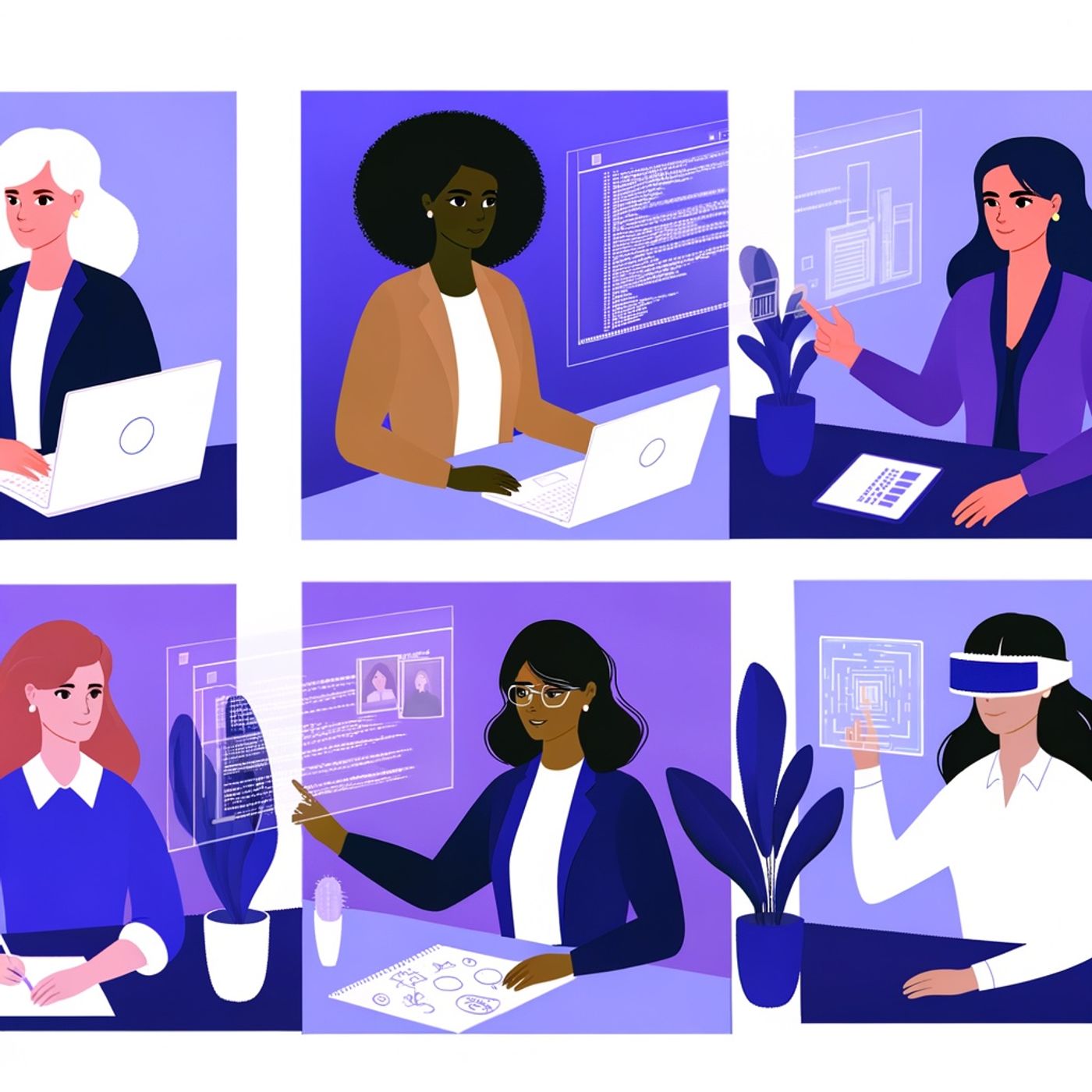Podcast Episode Details
Back to Podcast Episodes
Tech's Missing Middle: Advancing Women in a Wired World
This is your Women in Business podcast.
Welcome back, listeners, to Women in Business. Today, we're diving straight into the heart of how women are navigating the current economic landscape, especially in the fast-moving tech industry. Tech is shaping our world, and yet, women hold less than a third of the jobs in this sector. In the US, women comprise about 27% of tech roles, according to the latest Nash Squared Digital Leadership Report, with cities like San Jose leading in earnings and southern metros like Columbia, South Carolina, emerging for gender diversity. But behind the numbers, there are powerful stories of challenge and resilience.
Let’s start with an undeniable truth: the tech industry is still dominated by men, but change is underway. Since the early 2000s, the proportion of women in tech jobs has leapt from just 9% to 35%. Leaders like Reshma Saujani of Girls Who Code or Kimberly Bryant of Black Girls CODE have become iconic voices, pushing for representation and mentoring the next wave of talent. Yet, progress isn’t universal. While software development still sees only about one in five roles held by women, fields like data science and operations research now hover at nearly 50% female representation.
One discussion point we can’t ignore is the persistent gender pay gap. According to CompTIA, the median annual wage for tech workers in 2022 was over $104,000—doubling most other industries. Yet, women, even at the CEO level, earn about $20,000 less on average than their male counterparts. Computer science is narrowing the gap, with women earning 94 cents for every dollar a man earns—but in leadership roles, the difference is still glaring. This makes pay transparency and negotiation skills more critical than ever for women aspiring to climb the ladder.
Another key challenge centers on leadership and advancement. Only about 17% of tech companies have a woman CEO, and female CTOs are even rarer at just 8%. Women founders make up just 11% of tech’s top teams. Many of our listeners will relate to the so-called “missing middle,” when career momentum slows, often because workplace cultures don’t adapt to caregiving or the need for flexibility. The Women in Digital Report from Australia highlights that retention and advancement start to drop off at mid-career, not due to a lack of drive, but due to significant structural barriers.
A third point is the rise of artificial intelligence and emerging technology—and the growing need for women to build skills in these fields. Skillsoft data shows nearly 60% of women aren't yet using AI in their work, and those who do feel more productive and streamlined. As three-quarters of companies plan to ramp up AI by 2028, helping women gain access to these opportunities is pivotal—not just for individual advancement, but for closing the economic gender gap. McKinsey reports that addressing the gender divide in tech could unlock an astonishing $12 trillion for the global economy by 2025.
It’s also important to acknowledge the impact of remote work and tech sector disruptions. The COVID-19 pandemic allowed many to work from home, but it increased burnout for women and led to a short-term dip in female representation. As the industry rebounds, flexibility and wellness are becoming central to retaining more women in tech.
Finally, we can't ignore intersectionality. Representation for Black, Latinx, and other minority women in tech remains critically low, at only about 2% apiece. Organizations like Black Girls CODE and Latinas in Tech are fighting to change this, but the road ahead calls for intentional mentorship, investment, and systemic change.
Thanks for tuning in to Women in Business. Remember to subscribe so you don’t miss a future episode. This has been a quiet please production, for more check out quiet please dot ai.
For more http://ww
Published on 2 months, 2 weeks ago